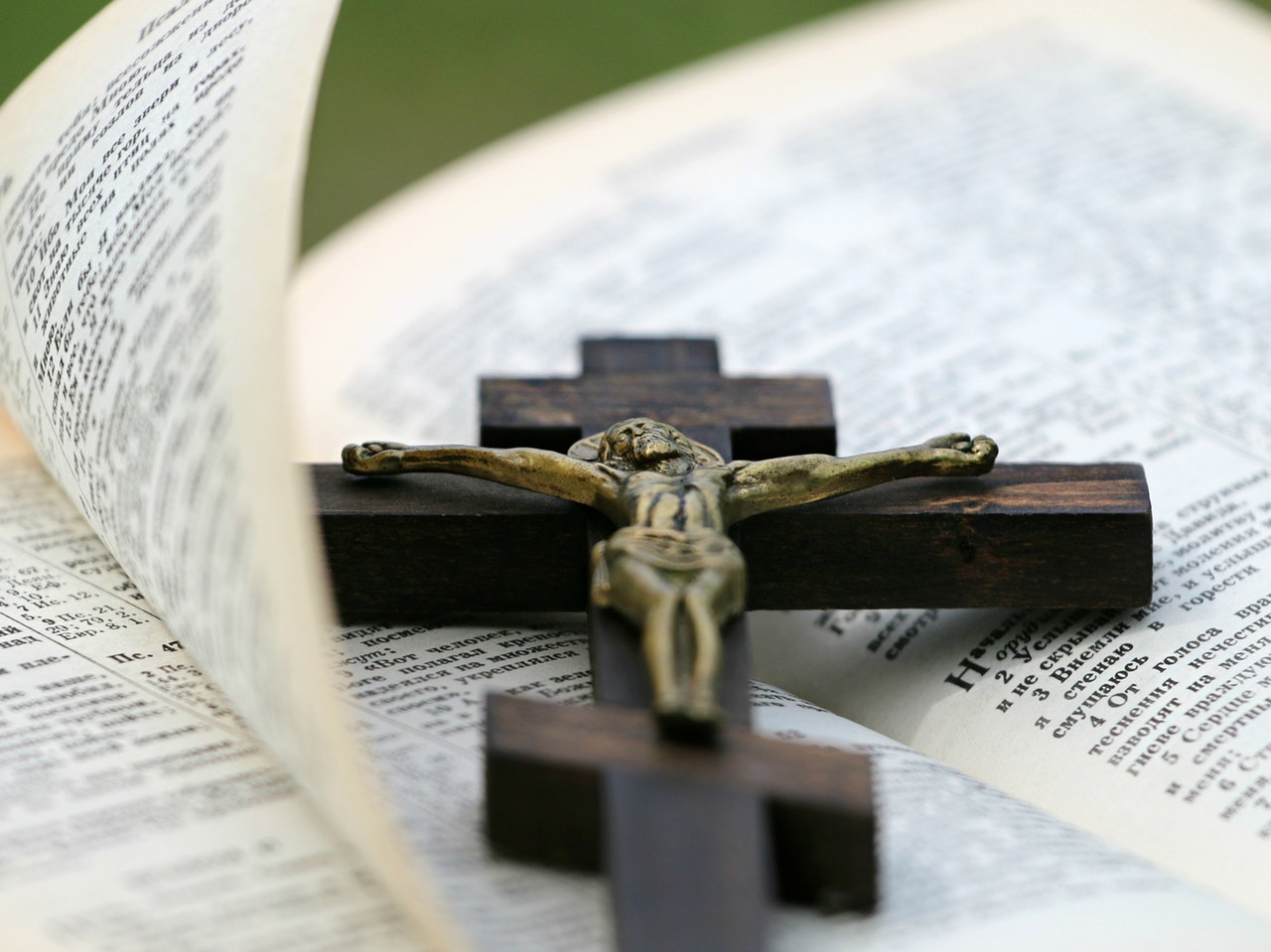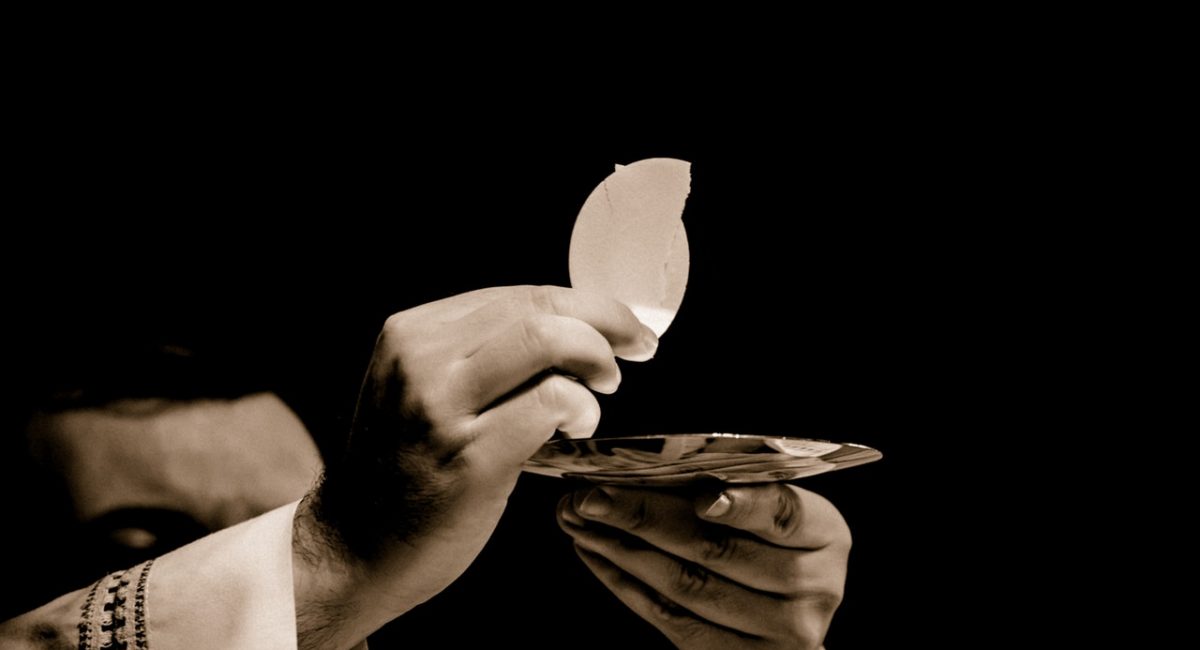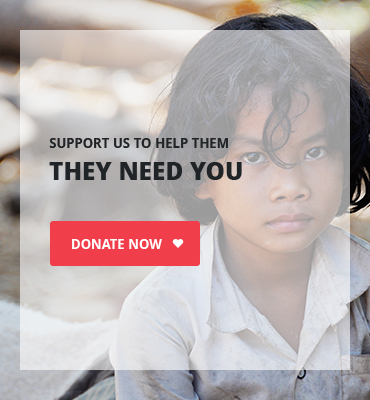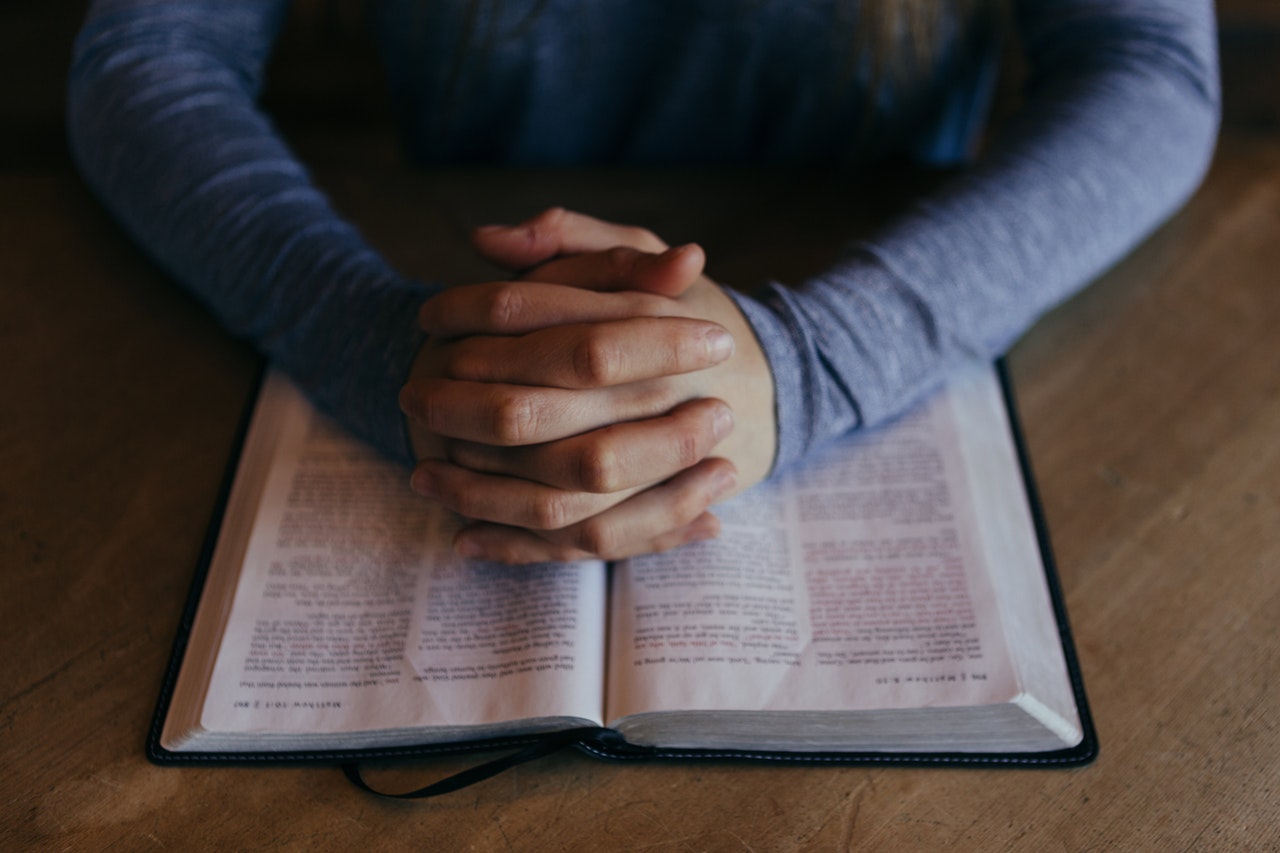Reflection for the Feast of the Body and Blood of Christ (Corpus Christi). Year B. 2018
– By Fr Ugo Ikwuka
Archway, London
The French philosopher René Girard believes that there is a natural violent tendency in humans which, if not contained, could lead to people undoing one another. He reckons that in civilised societies, the advanced systems of laws and their robust enforcement keeps people in check, preventing them from unleashing violence on one another.
However, he reasons that primitive (traditional) societies without such established systems of control offer animal (blood) sacrifices to achieve peace in the land.
In the belief of the traditional societies, the sacrifices are made to the gods who then bless the land with peace. For Girard however, the peace is achieved, not because of the activities of any gods, but because the aggression which people could have unleashed on one another is now directed at the sacrificial animal who thus becomes the scapegoat.
In a sense, this weird psychosocial interpretation of blood sacrifice of primitive cultures touches on the essence of the sacrificial death of Jesus.
Recall that during his trial, Caiaphas the High Priest had unwittingly prophesied that it is better for one man to die (i.e. become the scapegoat) than the whole nation to perish (John 11:50).
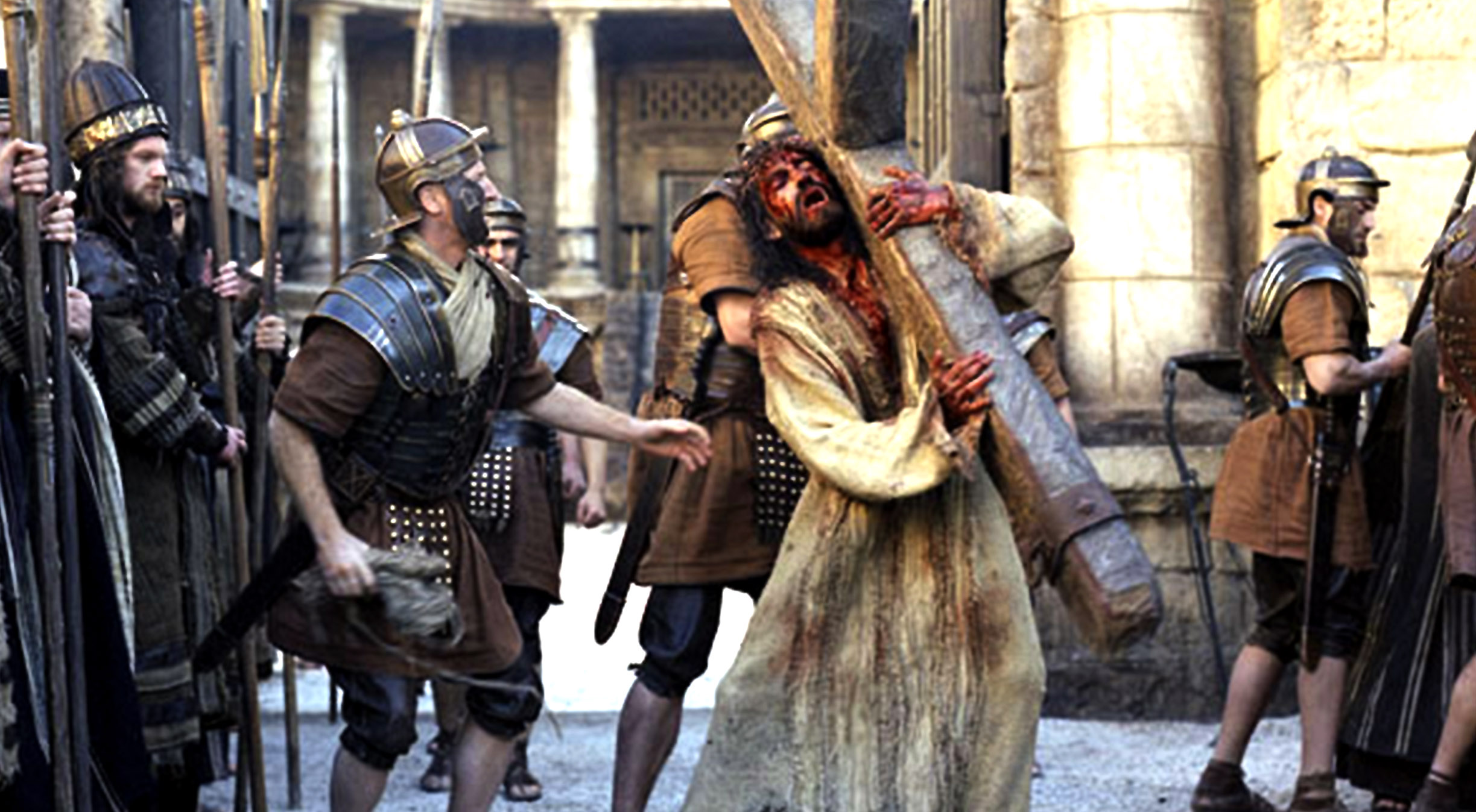
To truly understand the significance of what Jesus did at the Last Supper, when he offered bread as his body and wine as his blood in anticipation of his death the next day, we must understand the importance of blood sacrifice to the traditional Jews of the time.
In our First Reading this Sunday, the Feast of the Body and Blood of Christ (Corpus Christi), we have one of the moving stories of blood sacrifice in the Bible.
Having brought His people out of the bondage of Egypt, God made a covenant with them in the desert; that they will be His People and He will be their God. To seal this covenant, Moses performed an animal sacrifice at the foot of Mount Sinai.
He took the blood from the sacrificed animals (blood signifies life) and sprinkled some of it on the altar and the rest on the people. To fully appreciate this ritual, think of two people who ritually mingle their blood on purpose to seal their covenant fidelity to one another. Think of this as God and His people becoming blood relatives; the people pledging their life to God and God pledging His life to them.
The Second Reading from the Letter to the Hebrews also talks about blood sacrifice. It describes the activity of the High Priest in the Temple on the Day of Atonement, the holiest and only day of the year when the High Priest is allowed to enter the Holy of Holies – the inner sanctuary of the Tabernacle where God dwell, to offer sacrifice in atonement for people’s sins.
The High Priest will take with him two animals; a goat and a sheep. He would symbolically place the sins of the people on the goat (the scapegoat) and it would thereafter be driven into the wilderness to die (with the sins of the people).
He would thereafter slaughter the sheep and sprinkle some of its blood around the Holy of Holies (as Moses did on the altar). Subsequently, he would emerge to sprinkle the people. Again, think of this as God and His people becoming blood relatives; the people pledging their life to God and God pledging His life to them following the atonement of their sins.
It is only against this rich complex ritual background that we can understand and appreciate what Jesus did at the Last Supper in anticipation of the cross, as we read in this Sunday’s Gospel. In the tone of the rituals, he took bread and said: “This is my body which will be given up for you.” Then, even more evocatively, he took the cup and said: “This is my blood, the blood of the new and eternal covenant, which would be shed for you, for the forgiveness of sins.”
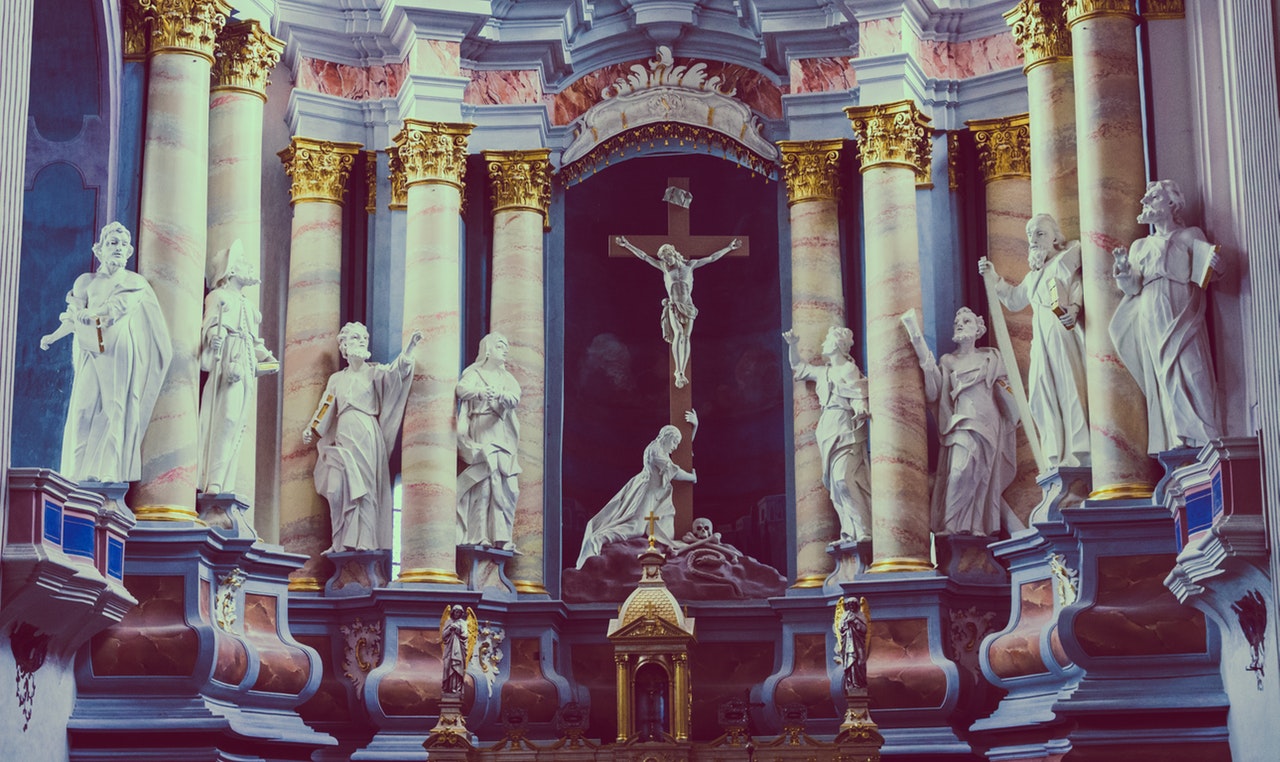
The next day, what is anticipated at the Last Supper is done in reality. What Moses did at Sinai, all that was done in the Temple for a thousand years, and indeed the blood sacrifices of all traditional societies were ultimately perfected by Christ’s blood sacrifice on the Cross, which definitively reconciled humanity with God. Jesus becomes the ultimate scapegoat that takes upon himself the sins of the world.
The Prophet Isaiah had captured this so perfectly: “Ours were the sorrows he bore, ours the sufferings he endured. He was destroyed because of our sins and crushed for our wickedness. Through his punishment we are made whole; by his wounds we are healed.” (Is. 53: 4-6).
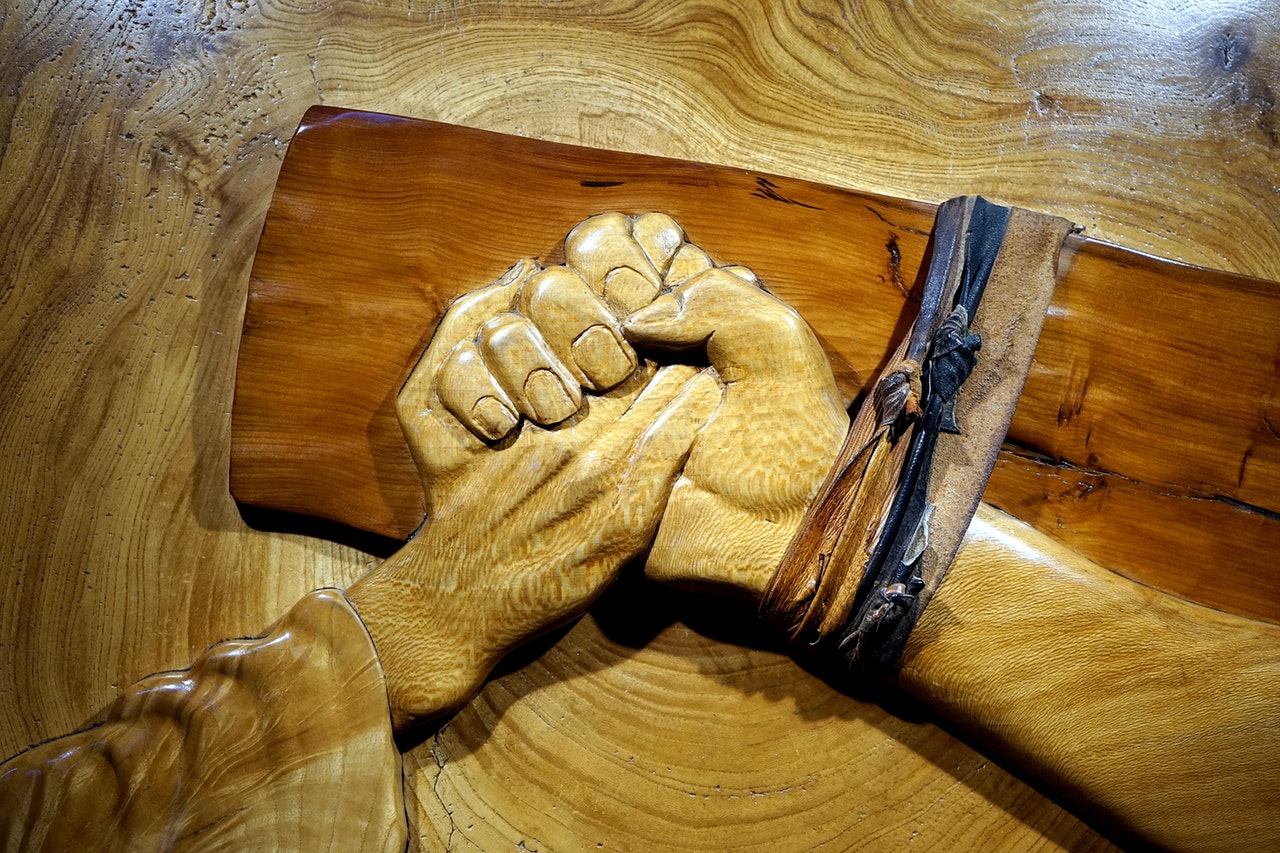
The Letter to the Hebrews highlights that it is not merely the blood of goats and bulls, but the blood of God’s own son that is being shed, which means the reconciliation is complete. This is also why the curtain in the Sanctuary that had stood between the people and the Holy of Holies is torn in two at the death of Jesus, an indication that the barrier between God and man is definitively removed.
Another subtle but very powerful quality of the sacrifice of Christ is that while the animal in the traditional blood sacrifice is always unwilling throughout the whole process as it is practically dragged to be sacrificed, Jesus willingly surrendered himself.
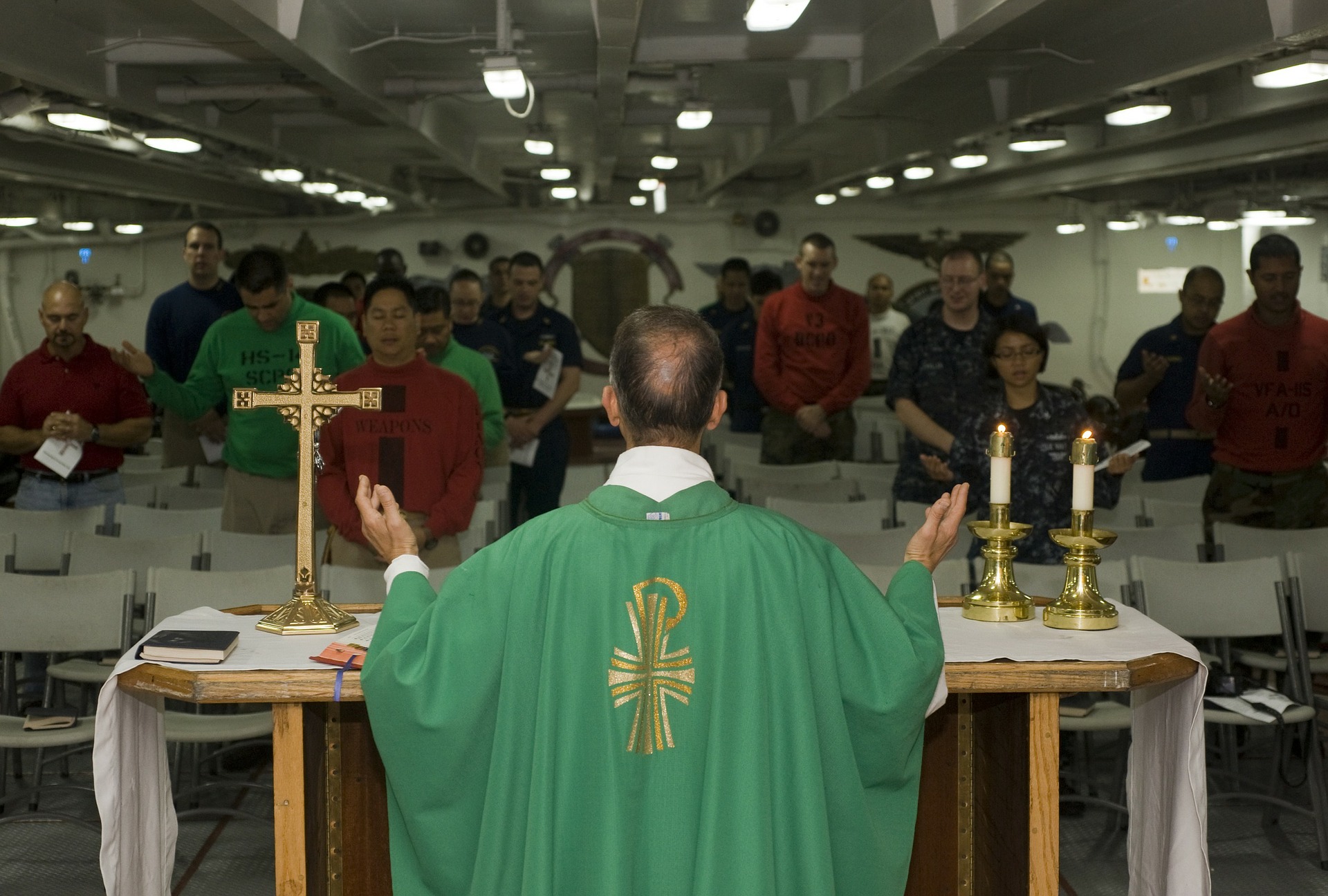
This reconciliation won by Christ on the cross of Calvary is offered daily, at Masses, in the Catholic Churches all over the world. At Mass, the great sacrifice of Christ is re-presented (sacramentally) as anticipated at the Last Supper.
From the Sanctuary, the priest comes down with the very life-giving blood of Jesus, not just sprinkling it upon us but offering it to us as drink; what more can show that divinity (God) and humanity have become blood relatives, that the broken relationship has been restored, and that divine life is offered again to us.
